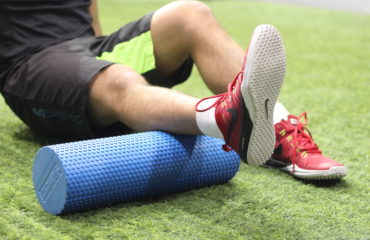Common Mistakes When Adding Plyometrics

Seeing videos of people do advance plyometric movements and then implementing it into your training regimen right away without any thought can be counter-productive. Before trying out really advance plyometric exercises, you must understand the basic concept of true plyometrics.
WHAT IS PLYOMETRIC?
To start, a practical definition of plyometric is rapid stretch of a muscle (eccentric action) that is immediately followed by a powerful and fast shortening of the same muscle and connective tissue (concentric action). The shortening of the muscle uses the stored elastic energy (also called the STRETCH SHORTENING CYCLE) to produce a greater force in comparison to a concentric action alone.
BENEFITS
Research studies show that by adding plyometrics into your strength training program, it can improve your vertical jump, acceleration, muscular power, leg strength, and overall proprioception.
However, here are the common mistakes that coaches/athletes make when implementing plyometrics:
1. Making plyometrics into conditioning – For example, a coach would not allow enough recovery in between sets. This also increases the potential for injuries
2. The concept of plyometrics is not being applied – For example, the true idea of plyometrics is to take advantage of the stretch shortening cycle. Coaches/athletes will often emphasize on using slow and static starts.
3. Quantity over quality – For example, a coach/athlete will add more volume while overlooking speed of the movement, intensity, and quality
PROGRAM DESIGN
One of the solution is to PAY ATTENTION TO PROGRAM DESIGN. The coach/athlete should have a purpose when choosing plyometric movements and prescribing different variables (sets, reps, intensity, etc). It is important to remember that plyometrics is used for developing power. The focus should be on the quality and speed of the movement, and to use proper progressions/regressions based on observations.
MASTER THE BASICS
Another solution is to go back to the basic fundamentals. It is established that the amortization phase – the transition time between the stretch and shortening of the muscle – is the most important phase. Ensuring that the athlete can correctly get into proper body position so that they can efficiently and properly perform plyometric movements.
It all starts with having good positioning, posture, and balance before and after the jump. This will play a key role in how well they can absorb and produce force. A lack of proper mechanics can result into loss of power and increase potential on non-contact injury.
Learning how to get into a solid athletic position prior to the jump is KEY. The shoulders, knees, and toes should be aligned with the arms positioned back and ready to drive upwards. The landing should also be similar with weight on the balls of your foot, and slight flexion at major joints. Considering combination of all these mechanics will allow for shorter ground contact time, fast rate of absorption, and produce powerful concentric action because of the quick recovery of potential energy.
By understanding the science, the better we can take advantage of the many benefits of true plyometrics. If you want to develop strength and power to improve your sports performance, SIGN UP NOW for my newsletter! Once you sign up, you will also get my FREE Power Development Program with added bonus.
In strength,
Coach KP




